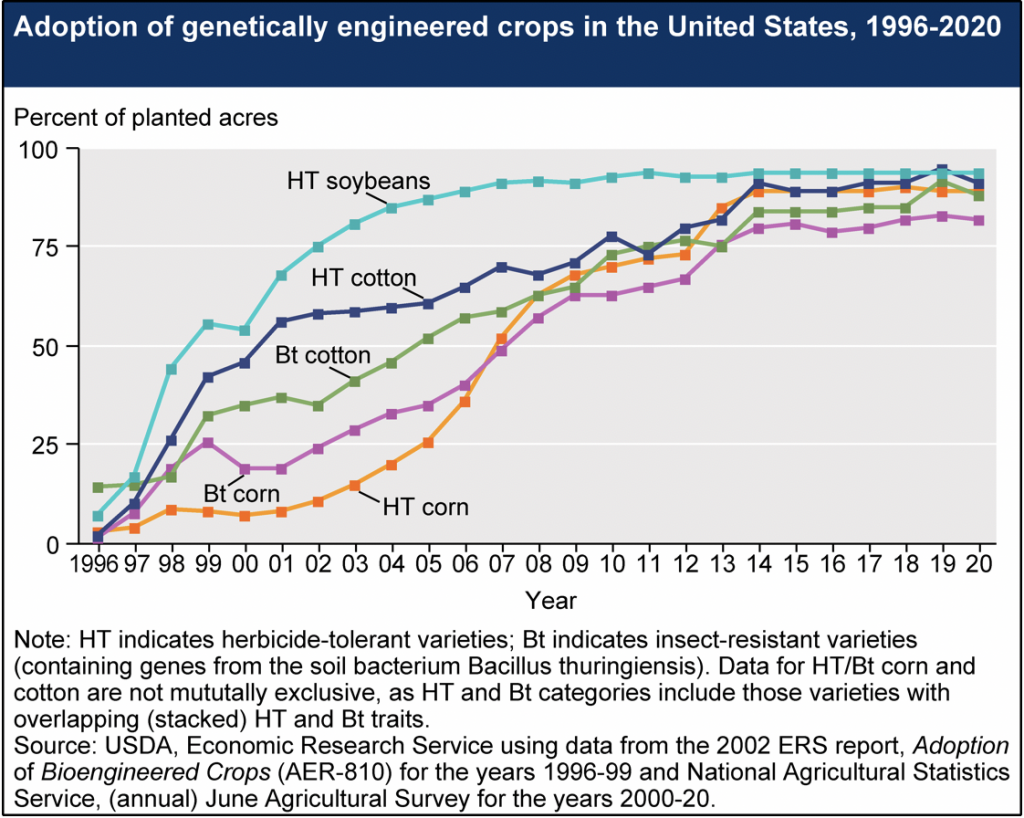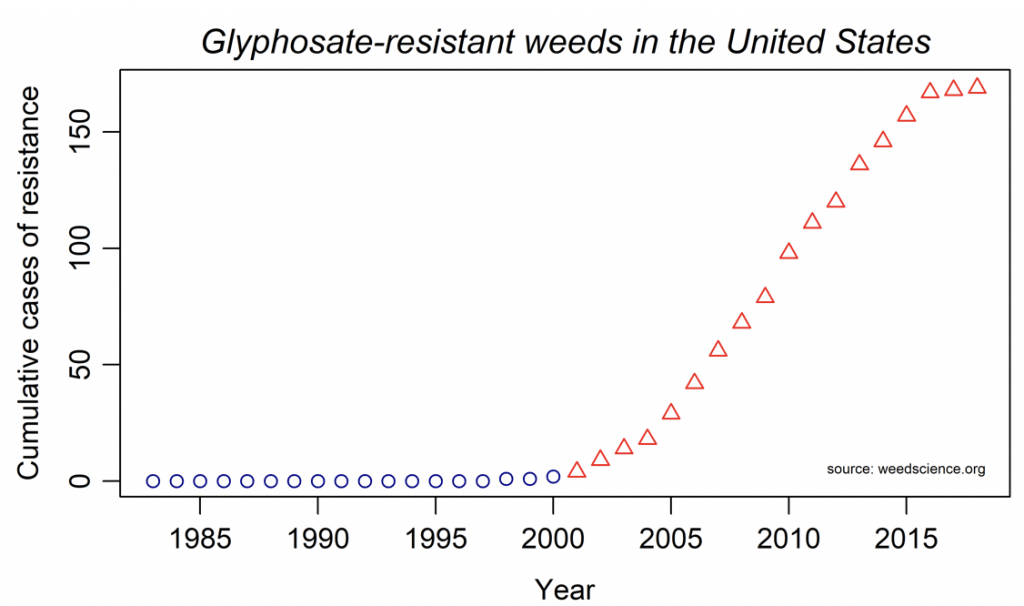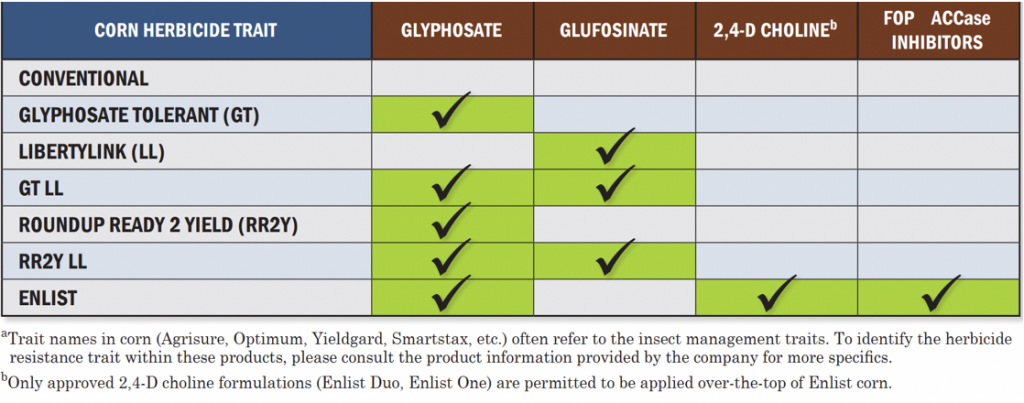I would like to start by thanking you for starting this blog and for the invitation. I am really excited to be in the PNW and look forward to working with you all. Now to the substantive issue. I am an optimist (or at least that’s what I tell myself), but I think by now most of us know that herbicide-resistant weeds are not going away anytime soon. Why? Because the only way to prevent herbicide resistance is to not use herbicides. Herbicides will undoubtedly remain an important weed management tool well into the future. If history has taught us anything, we saw that the years following the commercialization and high adoption of genetically engineered glyphosate-tolerant crops, glyphosate use in those crops increased drastically. In 1999/2000, glyphosate-tolerant soybean adoption rate in the United States reached 50% of planted acres (Figure 1)

Figure 1. Adoption of genetically engineered corn, cotton, and soybean in the United States. See the full publication here
There was a concomitant increase in the number of weeds resistant to glyphosate and this was not surprising (Figure 2).

Figure 2. Cumulative (unique) cases of glyphosate-resistant weeds in the United States. Source: weedscience.org
In the bid to control glyphosate-resistant weeds, the agrochemical companies have developed other herbicide-tolerant crops (Table 1 & 2) including those tolerant to multiple herbicide modes of action (stacked traits). For a complete list of herbicide-tolerant crops, see Herbicide Resistance Traits: Quick Reference Guide or GM Approval Database.
Table 1. Corn herbicide resistance traits and the herbicides that those traits provide resistance to.

This would be a bandage that provides some short to medium term relief in weed management to growers. The question is, how long before the weeds develop multiple resistance to those herbicides? Well, some weeds have already evolved resistance to multiple herbicide modes of action. With other crops with stacked herbicide-tolerant traits expected to be commercialized soon, should we be asking whether stacked herbicide tolerance traits will get us stuck in this endless cycle? We might not be able to answer this question but even the most ardent supporters of herbicides acknowledge the necessity of reducing reliance on herbicides through integrated weed management practices. The truth is, no matter how well these integrated practices are proven to be effective, growers would only adopt these practices if they are profitable and can easily fit into their existing operations. I like the idea of using (or including) sociology to manage herbicide resistance. The PNW has a lot of amazing weed scientists and I believe we can lead the charge in basic and applied research for managing herbicide-resistant weeds. For example, in addition to harvest weed seed control being conducted in the region, can we research ways to easily break seed dormancy, suppress seedhead production, or reduce weed seedbank, etc?
Albert is a weed science specialist at the University of Idaho Kimberly Research and Extension Center. I can be reached via email: aadjesiwor@uidaho.edu or phone: 208-423-6616.